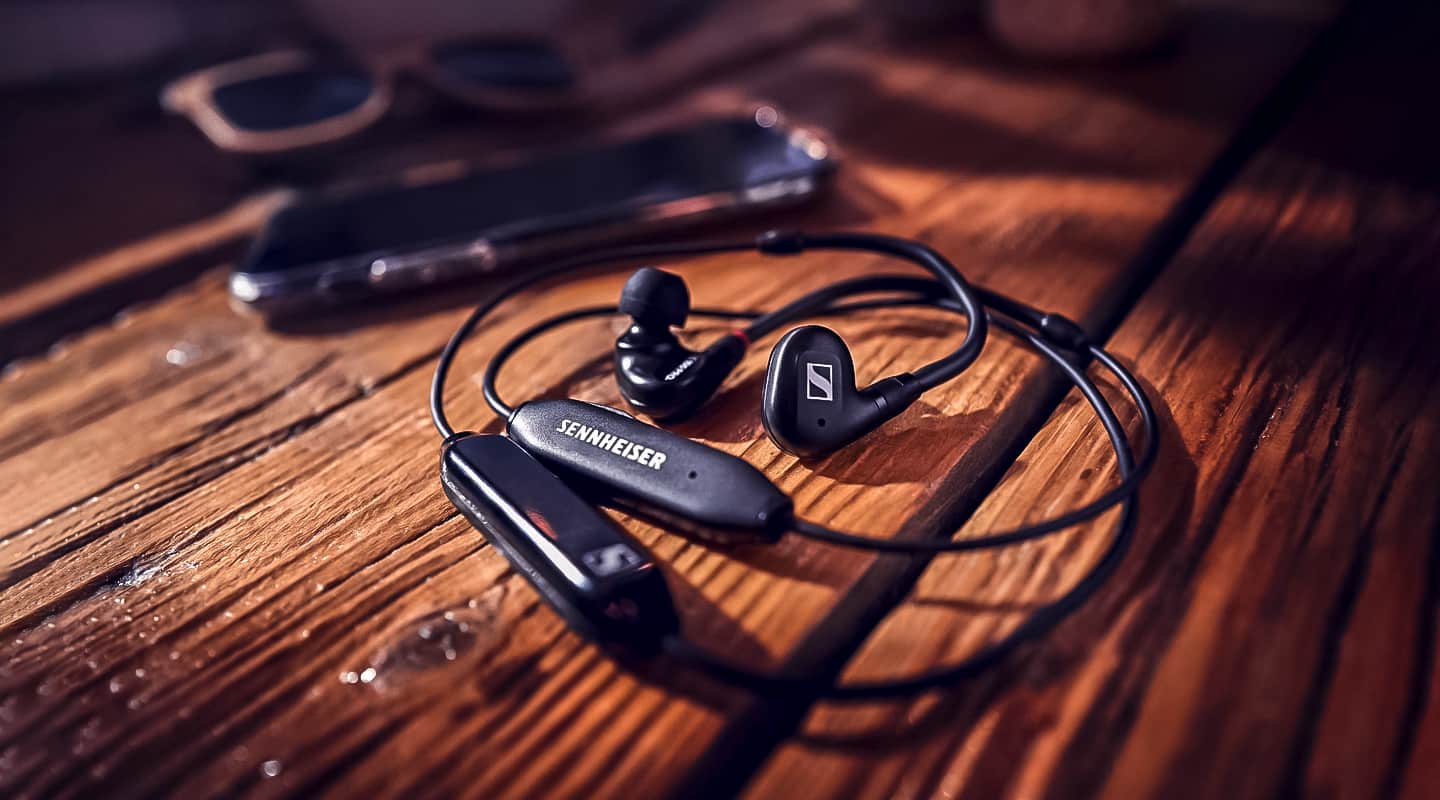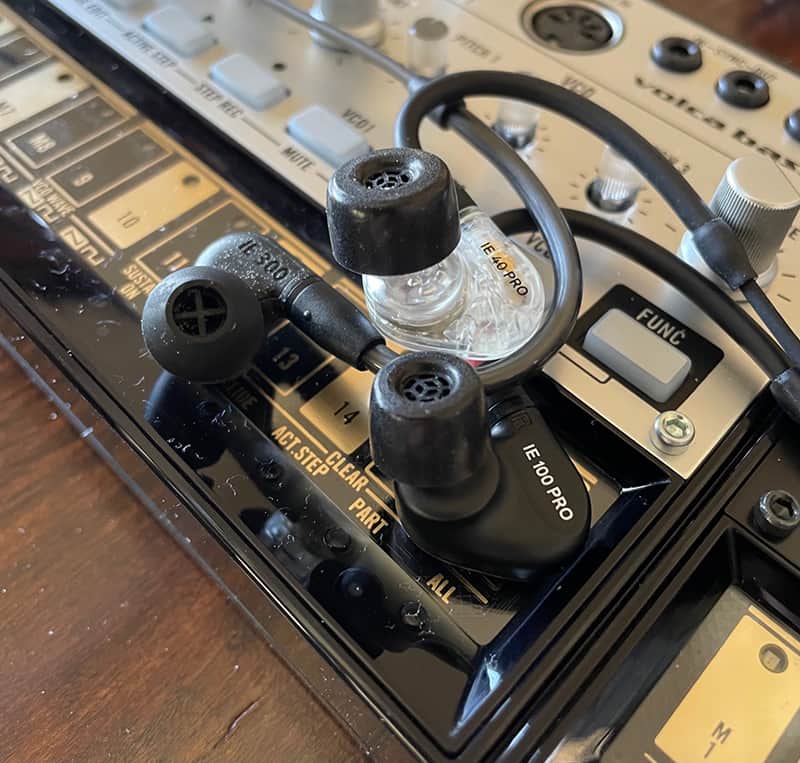
Review: Sennheiser IE100 Pro Wireless
Do the IE100 Pros finally break the moulds?
I have a confession. I have a pair of primo Stealth Sonics nine-transducer moulded IEMs that I don’t use.
I should explain. The Stealth Sonics team, incredibly graciously, offered me a pair. I had the moulds made and a month or two later the set arrived. I was stoked. They fit perfectly and sounded natural and detailed.
A pair of pro IEM moulds from the likes of Stealth Sonics are a huge asset to any musician. They can sound awesome and, even more importantly, they help to guarantee your long-term health of your hearing (by only exposing them to the audio you need to perform and not high levels of extraneous noise). More subtly, IEM moulds make a clear statement to everyone in your performing orbit — I take my sound seriously… please bring your ‘A’ Game when you’re around me.
BREAKING THE MOULDS
IEM moulds have been the gold standard monitoring option for serious musicians for about 25 years now. A properly fitted and moulded IEM blocks as much of the outside world as possible and from there you can spend about as much as you like on the earpiece itself — depending on the number of drivers and the sophistication of the engineering. Moulded IEMs are, by necessity, bespoke and highly personal personal items — a $2000 set is literally useless to anyone other than the owner.
So why are my über-cool nine-driver, carbon fibre-sheathed Stealth Sonics IEMs cooling their heels?
I can’t keep them on the road, pure and simple. I don’t know if I produce more ear wax than anyone else but the balanced armature design of the Stealths with the multiple ports, coupled with the longer ports due to the Stealth Sonics design philosophy of forming the moulds closer to the ear drum (halve the distance to the tympanic membrane and you can halve the level, which is always a good thing), means they’re always clogged, always compromised.
I’ve done my best to maintain them. I’ve had them suctioned-cleaned by an audiologist. But I can’t keep them on the road.

NEED TO KNOW
Sennheiser IE100 Pro Wireless
Dynamic Driver Earphone & Bluetooth connector
BEAT UP
At the complete other end of the spectrum, I have a pair of Beyerdynamic Beat Byrds. They may be superseded now but you could find them for as little as A$25, so I bought a bunch. From a production point of view, they’re practically disposable — if you lose them or need to lend them to another musician, the implications are minimal — just bust open another pair.
Here’s the thing: they fit me well and sound pretty darn good. Certainly adequate for most stage monitoring and luxurious for the mowing. As good as the Stealth Sonics? Of course not, but the Beat Byrds are just so much easier to live with — I think I’m onto my fourth pair… but who cares?!
What about isolation and ear health? Good point. But I’m not playing on loud stages. The absence of stage wedges, fewer screaming guitar stacks and high quality FOH systems mean I don’t need to blast my ears.
Rock drumming? That’s another story. My daughter is a drummer and I would have no hesitation in bankrolling moulds to protect her ears.
100 REASONS
After about 15 years of leaving Shure to it, Sennheiser is really going hard with its generic single dynamic driver earphones. We reviewed the flagship IE500 back in 2019. They set the standard: very hard to fault and expensive.
Released at the same sort of time, the IE40s are only a fraction of the price of the 500s but offer excellent performance and value.
Now, Sennheiser is superseding the IE40s with the IE100 Pros. I’ve just cracked open a pair, and, much to my surprise, they’re Bluetooth earphones. Or more accurately, they have a Bluetooth option. Sennheiser, rather cutely, suggests one approach is for Live and the other is for Life. I’m a fan. The Bluetooth kit has two lumps in the lead: one’s a transmitter, the other has some basic controls for volume, taking phone calls and muting. It also packs a MEMS mic for handling voice assistant instructions.
The Bluetooth kit’s battery has a run time of some 10 hours and powers via USB.
The Bluetooth kit plugs into the earpieces. Gently pull the plugs out and you can replace them with IE100 Pro’s cables. It’s about 1m long and perfectly adequate for reaching your IEM pack, any other duty will require an extender.

THE POWER OF ONE
Years ago, Shure proved that generic earphones can sound great, without the price tag and all the upkeep of custom moulds.
Sennheiser has proven to musicians and sound pros that you don’t need a whole fusillade of drivers, mechanical filters, labyrinths and micro technology to build a superb-sounding earphone.
The question for we as musicians and sound people is how much isolation do we need to protect our hearing? If you’re a drummer or a monitor engineer sitting next to a bunch of sidefill, then custom moulds aren’t only the right alternative but the only alternative.
For quieter stages, then a pair of generics can make sense.
Personally, I think the price point of the IE100 Pros is perfect. You can pick up a pair for not much more than A$150 and you have an ‘everyday’ earphone that’s just as useful plugged into your laptop and paired to your phone as it is connected to your IEM pack on the weekend. They’re very easy to clean, easy to live with, and if the worst happens — you break them or lose them — you’re not bereft/inconsolable. I think Sennie has found a new sweetspot.

























RESPONSES